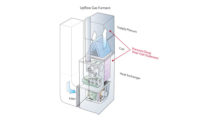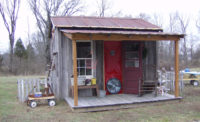This article is reprinted from the February 2015 RSES Journal
The Merriam-Webster dictionary defines ethics as “the code of good conduct for an individual or group.” When HVAC professionals fail to deliver properly designed and installed residential duct systems, we are breaking a covenant with our customers and damaging the reputation of our companies and our industry.
Our customers are entitled to expect HVAC professionals to make appropriate recommendations for systems that will deliver expected comforts and perform within the operating cost as advertised. In addition to certifying the work being performed and the products sold, customers should expect HVAC professionals to charge a fair price for all parties involved.
Most professionals can agree on these basic principles for doing business, but over my 30-plus years in the HVAC industry, I have come to two unfortunate conclusions: The HVAC industry has a dismal record when it comes to designing and installing efficient residential HVAC duct systems. Also, far too many designers and installers don’t know, don’t care and don’t show any interest in improving.
Rick Matthews, distributor service coordinator for Insco Distributing writes:
“Our business is air conditioning. Note the first word is “air.” If the airflow isn’t right, there is NOTHING ELSE that is going to be right in the entire system. Start with doubling the return air and filtration and you will improve the average existing system’s air-side performance by an easy 40 percent.”
Inadequate airflow cheats the customer out of the performance and equipment life they paid for. So the question is: How can we turn the tide back to making airflow a priority? Building codes never have and perhaps never should specify what constitutes good airflow. However, if the HVAC industry doesn’t correct these problems, we may well see testing and balancing “commissioning” of residential duct systems as part of the code requirements to receive a certificate of occupancy.

Tolerances are becoming tighter
As regional standards begin to dictate higher efficiency equipment, there will be less room for tolerances of the comfort-cooling, explains Rick Kincel, regional trainer/developer for Coburn’s Supply. “Airflow, and especially airflow in humid markets, has become immensely more critical,” he says. “Expecting an electronically commutate motor (ECM) to compensate for poor duct design is a foolish expectation, and, at the very least, technicians should begin measuring external static pressures to identify potential problems.”
The problems associated with poor airflow are well documented and add significant costs to manufacturers and wholesaler customer service departments. As Carrier Enterprise recently discovered, a solution to these issues may be to develop a training curriculum for HVAC professionals around airflow issues.
“In 2010, the Customer Assurance team for Carrier Enterprise South Central monitored the technical support phone calls and actual job site visits in order to determine the direction that the training needed to take in order to provide the greatest benefit to our dealer and consumer base,” explains Thom Huxley, customer assurance manager for Carrier Enterprise. “This equals approximately 51,000 interactions per year. From this we determined that we needed to concentrate on airflow training. We found that of 60 percent of all the problems we resolved, the root cause was a severe lack of airflow. We created a stand-alone airflow training course, which we later included in our Total Tech Class.”
Carrier Enterprise South Central then revised the training focus on correct static pressure relationships based on proper air velocities within the ducting. A new emphasis was placed on explaining the effects of flex duct compression and the performance of the airflow through the duct.
Huxley adds, “We’ll ask our class participants how many measure superheat, sub-cooling and temperature drop across the evaporator coil and several hands go up. We then ask, ‘How many of you verify cfm?’ Not a single hand goes up. We then explain how that none of the other data means anything without the proper cfm passing over the evaporator coil.”
The lack of proper return air is the single biggest problem, Huxley reports.
“Return air, as per (ACCA) Manual D, should travel at 400 fpm optimal velocity. Most air filters are rated at 400 fpm velocity with some as low as 300 fpm,” he explains. By design, total static pressure (or the amount of pressure measured in inches of water when air moves through an object such as ductwork) on most gas furnace blowers should be 0.5 inches water column (wc). Approximately 1/3 of the total static pressure between the filter and blower compartment of the furnace and 2/3 of the total static pressure should be read between the furnace and evaporator coil.
The static pressure should be between 0.3” and 0.5” inches wc total external static pressure on air-handlers. “With ½ between the filter and return opening and the other ½ in the supply plenum in order to achieve optimal performance” he says.
Huxley also notes that on most residential and light commercial systems, metal duct and flex duct, these criteria are not met, and proper static and velocities are seldom achieved.
After three years of concentrating on this training in Carrier Enterprise’s classroom, job visits, and by phone (over 150,000 contact points,) the overall problem remains at or about 60 percent of interactions are airflow related issues. On the upside, their efforts have been rewarded by reducing compressor warranties by $3.25 million over the past three years.
Still, airflow problems are a common theme in the HVAC industry. Countless articles have been written on the poor quality of workmanship that our residential customers are paying for. While the HVAC industry isn’t alone in this, we certainly own our share of the problems.
One only has to search the web for “HVAC airflow problems” to get thousands of hits on the subject. It is a systemic problem and despite the efforts of trade publications and a significant investment on the part of our industry to provide airflow training, the problem is getting worse.

If we don’t correct the problem, what’s next?
If the HVAC industry does not correct its airflow problem, one predictable outcome is that we will see regulations address it through building codes and local ordinances. Building codes have historically focused on building safety, but today there is an equal emphasis on energy efficiency. If the HVAC industry can’t or won’t address the airflow problems themselves, it is likely that the codes will address them for us.
Another long-term outcome could be an increase in the use of ductless mini-splits. It stands to reason that if ducted systems continue to suffer from an industry that gets it wrong more often than we get it right, something will have to change. With such a change, we could see a huge segment of our industry start to evaporate.
Chris Van Rite is the vice president of business development for M&M Manufacturing Co., located in Fort Worth, Texas. Contact him at 817-336-2311 or via email at cvr@mmmfg.com. For more information, visit mmmfg.com.










